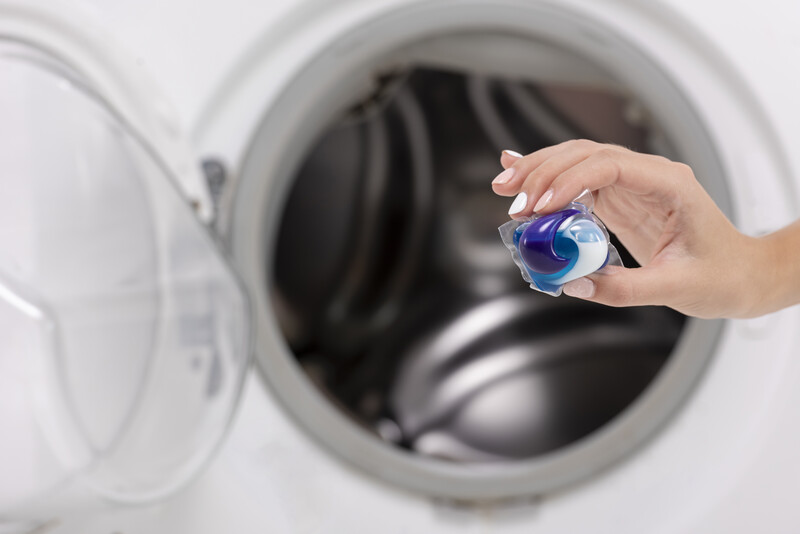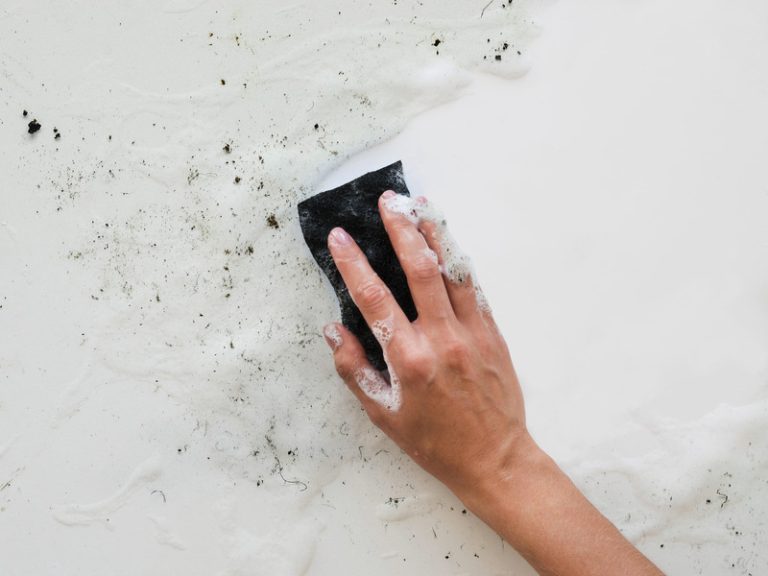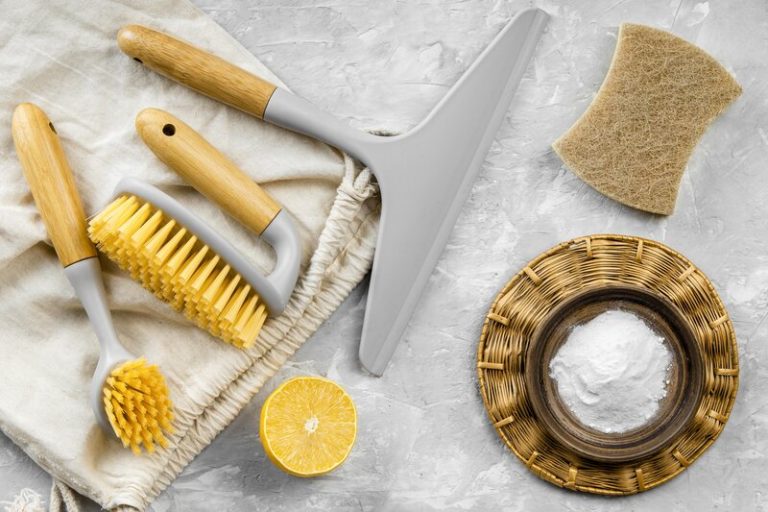Knowing how to clean washing machine is essential for keeping your laundry fresh and extending the machine’s lifespan. Over time, detergent residues, fabric softener buildup, and grime can cause unpleasant odours and decrease cleaning performance. Regular maintenance not only tackles these issues but also helps prevent mildew and unwanted smells.
This guide will walk you through a simple, step-by-step process to thoroughly clean your washing machine, including tips for using natural cleaning solutions that are both effective and gentle. With a few easy steps, you can keep your washing machine in peak condition, ensuring that your clothes come out fresh and spotless every time.
What Supplies Do You Need to Clean a Washing Machine?
To effectively clean your washing machine, you’ll need a few essential supplies that can tackle grime, mould, and odours, ensuring a fresh and hygienic appliance, such as those found in a well-stocked cleaning lab. Common cleaning agents like bleach and vinegar are highly effective at sanitising the drum and eliminating bacteria, while shop-bought options such as washing machine cleaners or soda crystals can provide additional cleaning power.
When embarking on the journey to maintain the cleanliness of this crucial household appliance, it is important to gather the right items, including readily available household items. Here’s a list of necessary supplies and their respective roles:
- Vinegar: A natural disinfectant, vinegar cuts through soap scum and mineral deposits, leaving the drum odour-free.
- Baking Soda: This gentle abrasive can help deodorise and cleanse the machine, especially when paired with vinegar.
- Bleach: A powerful sanitising agent, bleach is ideal for removing mould and mildew, but it should be used sparingly and with care.
- Washing Machine Cleaner: Specifically formulated for this task, these cleaners are designed to dissolve buildup and maintain the efficiency of the appliance.
- Soda Crystals: These can effectively soften water and tackle dirt and stains, making them a versatile cleaning aid.
By utilising these supplies correctly, one can ensure their washing machine remains efficient and hygienic, preventing issues that arise from neglect.
Step-by-Step Guide on How To Clean Washing Machine
Cleaning your washing machine can be a straightforward process if you follow a step-by-step guide that covers all aspects of the cleaning task, from the drum to dispensers and filters, ensuring a thorough clean. These include:
a. Prep Your Washing Machine
Prepping is the first step in knowing how to clean a washing machine effectively. Start by inspecting the rubber seal for mildew and removing any foreign objects from the drum.
Clearing the filter, emptying pockets, and checking for detergent residue help prepare your machine for a thorough clean. This preparation safeguards your appliance, improves performance, and paves the way for a successful deep clean that enhances wash quality.
b. Clean the Detergent Dispenser and Fabric Softener Dispenser
The detergent and fabric softener dispensers can harbor residues and mildew, so knowing how to clean washing machine dispensers is vital. Remove them, soak in warm soapy water, then scrub with a soft brush. A vinegar and baking soda mix can tackle tough stains.
Regular maintenance of these parts prevents odors and ensures cleaner laundry, keeping your washing machine running efficiently and your clothes smelling fresh.
c. Clean the Drum and Door Seal
The drum and door seal can accumulate grime, impacting cleanliness. Learning how to clean a washing machine drum and seal involves using vinegar for the drum and baking soda paste for the rubber seal.
Run a hot wash with vinegar to sanitize the drum, then wipe the seal thoroughly. Regular attention to these parts keeps odors at bay and maintains a fresh environment for your laundry, boosting your machine’s performance.
d. Clean the Filter
Cleaning the filter is essential to maintaining a functional and fresh-smelling washing machine. Start by unplugging the machine and locating the filter, typically near the base. Carefully open it and remove lint, debris, and any built-up residue.
Knowing how to clean washing machine filters prevents drainage issues and keeps your appliance running smoothly. Incorporate this simple maintenance task into your routine for a more efficient, longer-lasting machine.
e. Run a Cleaning Cycle
The final step in how to clean washing machine interiors involves running a hot water cleaning cycle with a cleaner like Affresh or natural vinegar. Remove any items, add the cleaner, and select the hottest cycle to break down grime.
This deep-cleaning method removes odors and leaves your washer ready for fresh laundry. Finish by wiping down the door and seals, then leave the door ajar to air dry and prevent moisture build-up.
Tips for Maintaining a Clean Washing Machine
Maintaining a clean washing machine requires consistent effort and routine care to prevent the build-up of odours, mildew, and bacteria that can compromise its performance. Regularly running a cleaning cycle using an appropriate cleaning agent can also help maintain efficiency.
By adhering to a few simple tips and practices, you can ensure that your appliance remains fresh and hygienic, extending its lifespan and improving your laundry results.
How Often Should You Clean Your Washing Machine?
The frequency of cleaning your washing machine can significantly impact its efficiency and hygiene, with most experts recommending a deep clean every one to three months, depending on usage.
Regular maintenance not only helps prevent odours and mildew growth but also prolongs the lifespan of your appliance.
To determine the appropriate cleaning schedule, consider the loading frequency and the types of loads being washed.
For families that frequently wash large loads of laundry, monthly cleaning may be necessary to combat buildup from detergent and fabric softener.
If you primarily wash lighter items or have fewer loads each week, cleaning every two to three months could suffice.
Special situations such as washing gym clothes or heavily soiled items may warrant more frequent cleaning to ensure the washing machine remains in optimal condition.
Monitoring your appliance for signs of residue or unpleasant odours can also guide your cleaning schedule effectively.
What Are Some Natural Cleaning Solutions for Washing Machines?
Using natural can be an effective way to learn how to clean washing machine interiors naturally, using common household items like:
a. Vinegar and Baking Soda
Vinegar and baking soda are a natural powerhouse duo when it comes to how to clean washing machine drums and remove odors. Start by pouring one cup of vinegar into the drum, then run a hot cycle. Once complete, add a cup of baking soda and run another hot cycle.
This combination dissolves detergent buildup, sanitizes, and deodorizes, ensuring a fresh, clean machine. Monthly use enhances machine hygiene and longevity.
b. Lemon Juice and Baking Soda
Lemon juice and baking soda create a refreshing, natural solution for how to clean washing machine interiors. Mix two cups of lemon juice with one cup of baking soda into a paste, then apply it to the drum, dispensers, and door seals. Let it sit for 30 minutes before running a hot water cycle.
This method eliminates odors, removes grime, and leaves a fresh scent, offering an affordable and eco-friendly cleaning option.
Knowing how to clean washing machine thoroughly is essential for maintaining its performance and avoiding unpleasant odours. While regular upkeep helps, a deeper clean now and then ensures all hidden grime is effectively removed, leaving your appliance truly refreshed.
Rather than tackling the task alone, let TEKA Cleaning handle the heavy lifting. With expert residential cleaning services, TEKA Cleaning can give your washing machine the professional deep clean it deserves.
Don’t wait for build-up to impact your appliance! Reach out TEKA Cleaning today at 01223 751 544 and trust their skilled team to keep your home and machine spotless.
Read also:











